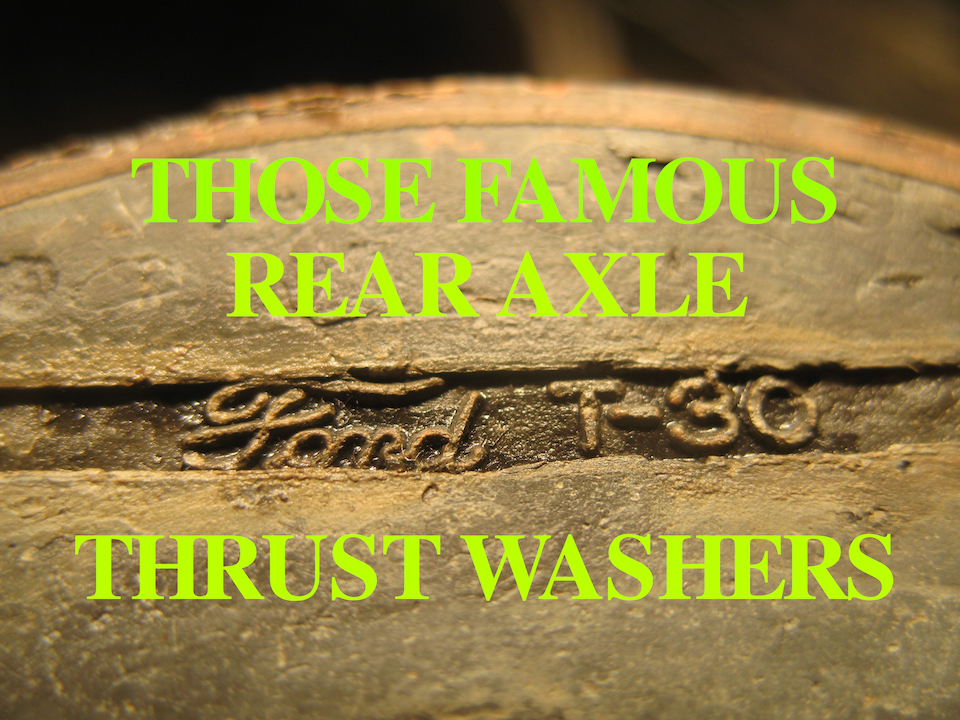 |
Without much Model T experience, I was blissfully unaware of the problems often caused by original rear axle thrust washers. These washers, spacers which keep the differential and rear axles centered in the housings, were originally made of a Babbitt material which over the decades becomes brittle and eventually disintegrates. The loss of those thrust washers allows the axles and differential to shift sideways, which presents some serious potential problems. I knew nothing of this when I was driving down the street and my right rear wheel seized up. I got the car off the street, managed to put it on a trailer I brought from home, and hauled it away. |

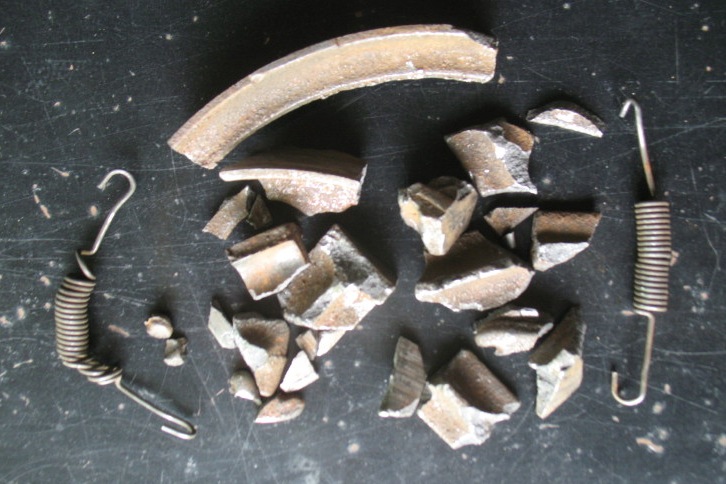 |
| When
I
pulled off the seized right rear wheel I found
that the brake shoes had been broken up by the hub
bolts and nuts. Without knowing what had
caused this, I ordered new brake shoes, installed
them, and thought I had fixed the problem. I drove
the car with the new brake shoes and all seemed
fine. But meanwhile, I was reading the MTFCA
online forum and starting to find out about those
thrust washers. So when I heard an odd sound from
the rear end while driving, I removed the
filler plug, stuck in a finger, and pulled out
silvery oil with little chunks in it. That
told me it was time to rebuild the rear axle.
Fortunately the MTFCA axle book by Glen Chaffin
tells how to do the job. Before going on with more about rebuilding the rear axle, let's be clear about why this is important. When those thrust washers disappear, the differential and rear axles can shift to the left, pulling the hub nuts and bolts into the brake shoes and making the kind of mess pictured above. But wait, that's not all. In fact, it's a minor inconvenience compared to what else can happen. As the differential shifts to the left, the ring gear becomes disengaged from the pinion. At this point the wheels are no longer connected to the engine and transmission, and the car is freewheeling. To make this even more exciting, you no longer have a foot brake. Very disappointing things can result. There are other symptoms than rear brake destruction that may indicate thrust washer failure. Sometimes there's a click, a thump, or a grinding sound, especially on turns. Sounds can travel on a T, and it's not always obvious where the source of the sound is. Sometimes people think it's coming from the transmission, or even the engine, when it's actually from the rear axle. So anytime you have a Model T and don't know whether the babbitt thrust washers have been replaced, the wisest course of action is to open up the rear end and find out. A good way to support the vehicle when you remove the rear end is with a six foot piece of heavy two inch square tubing. Supported by a pair of stands, the tubing goes under the frame, behind the muffler. The stands will be just forward of the axles and present no obstacle when you pull the rear end back from under the car. |
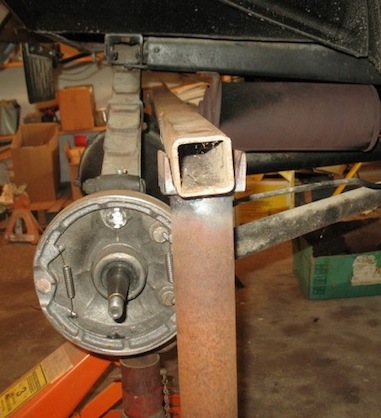 |
 |
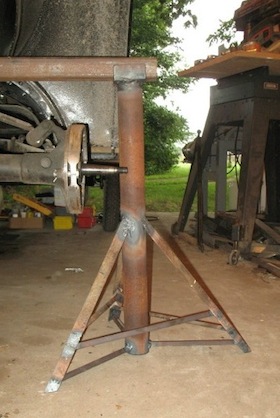 |
Here's the inside of an axle housing after the old babbitt thrust washers have done their thing, and the biggest remaining chunks of the old washers, and an original thrust washer with its new bronze replacement in front of it. |
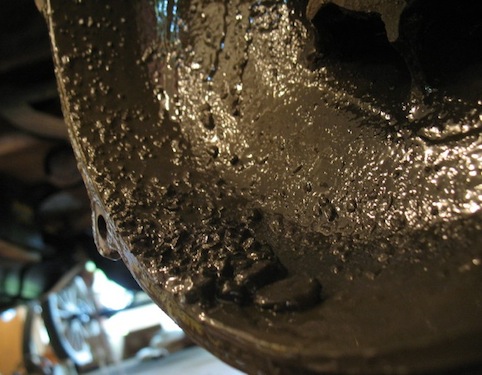 |
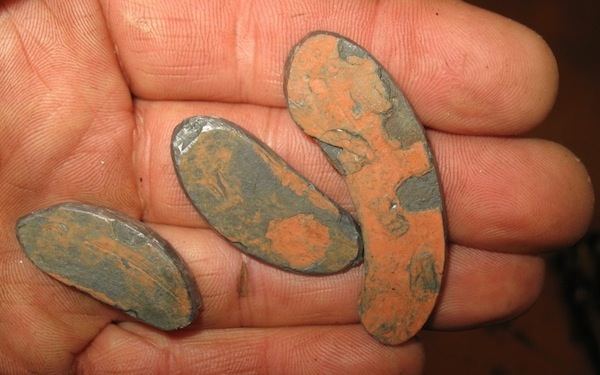 |
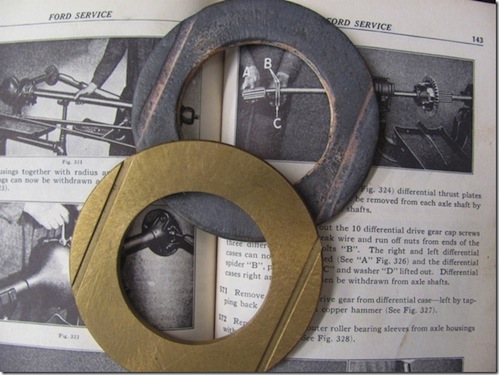 Dan Treace photo |
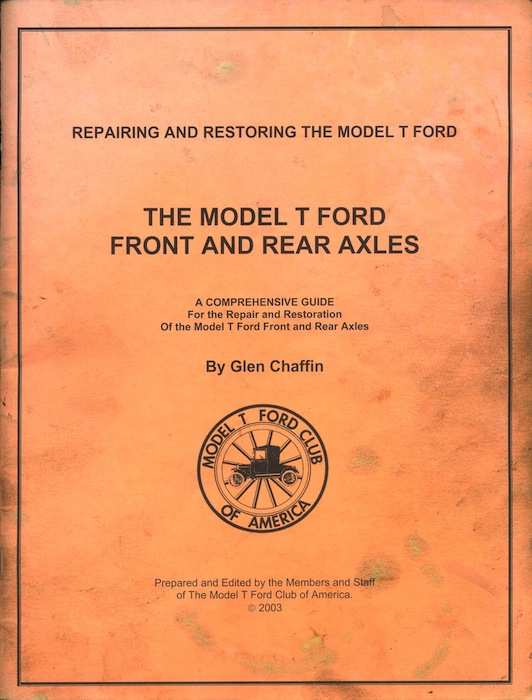 |
If you open up a rear
axle and find babbitt thrust washers or their
remains, the MTFCA axle book by Glen Chaffin
tells you almost all you need to know. It provides
guidance on what to do and how to do it and is
readily available from the MTFCA at http://modeltstore.myshopify.com/products/service-manuals and from all the Model T
parts vendors. The MTFCA also has how-to videos, but
the grease smudges on my book show that I found it a
handier reference to use while I was working on the
project. It's faster than going through a video to
find the part about what you're doing at the moment. My one quibble with the book is that it's impartial about whether to use the original pinion bearing setup or a modern replacement. Most "improvements" for the Model T aren't. But after attempting to go original on my first rear axle rebuild, I'll always use the modern replacement from now on. I wasted my money and time trying to install a new pinion bearing inner sleeve, and found the job too much for me. I ended up with the thing partly on and stuck, and finally cut it off with a grinder and ordered the Fun Projects kit. Currently a modern replacement for the pinion bearing is available from Texas T Parts. 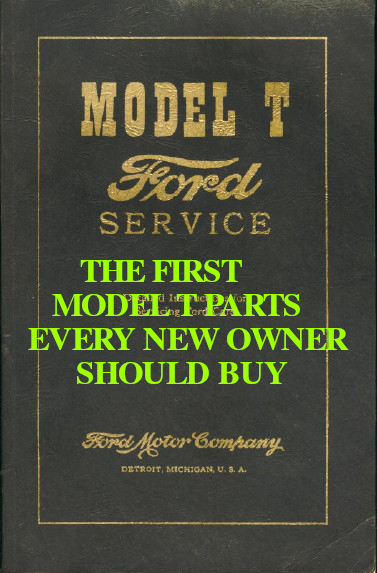 In addition to the MTFCA
books on various areas of Model T repair, one of the
first Model T In addition to the MTFCA
books on various areas of Model T repair, one of the
first Model T parts every
new owner should buy is the Ford shop manual
available in reproduction from all the parts
vendors. This and the MTFCA books will tell you
almost all you need to know. The Model T is
relatively simple, but it's different from other
cars. If you just dive in without some guidance you
may be surprised at what you find, and consulting
the books first can save you a lot of grief, hassle,
and expense. parts every
new owner should buy is the Ford shop manual
available in reproduction from all the parts
vendors. This and the MTFCA books will tell you
almost all you need to know. The Model T is
relatively simple, but it's different from other
cars. If you just dive in without some guidance you
may be surprised at what you find, and consulting
the books first can save you a lot of grief, hassle,
and expense. Update: 6-21-2023 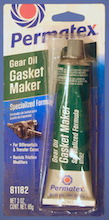 When you install new inner seals, use a gear oil resistant sealant to prevent oil leaking onto your rear brakes and wheels. |
HOME
VEHICLE INDEX